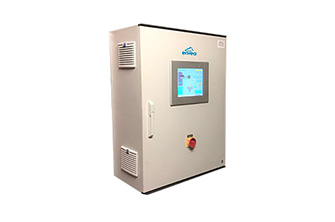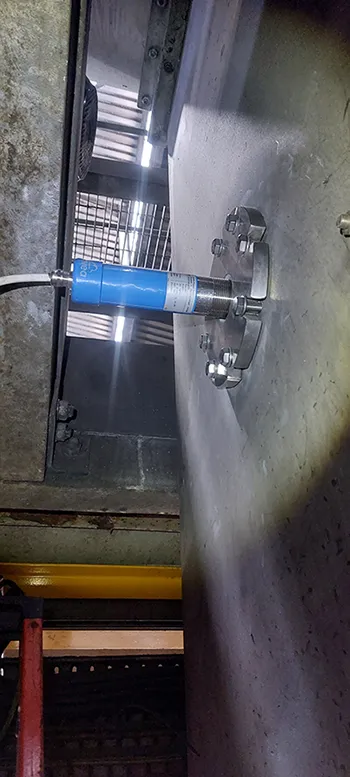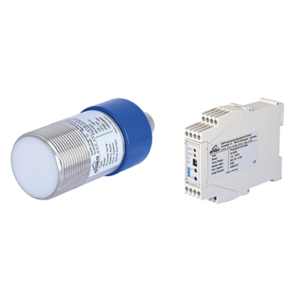
Sugar manufacturer | FlowJam S
Client: Sugar manufacturer in United Kingdom
Installation: On the screw conveyors
Function: Detect flow and prevent blockages
A sugar production factory is a complex operation that involves various processes to transform sugar beet into refined sugar.
Among the critical aspects of controlling this manufacturing process is to reduce the fire risk posed by screw feeders. When a blockage occurs post dryer, the screw feeder grinds against its casing, with the potential to overheat and spark.
Flow detection plays a pivotal role in identifying and preventing blockages on the production line.
Additionally, the optimised flow rates lead to streamlined production processes, improving overall efficiency, and supporting the plant’s sustainability objectives.
WHICH CHALLENGES DO SUGAR MANUFACTURERS FACE?
Prior to implementing a robust flow detection system, the sugar production factory encountered several challenges:
- Fire risk: If the empty screw feeders are turning without material passing through, there is a potential for the friction of the metal to overheat and spark.
- Blockages: Without precise monitoring, pulped sugar beet regularly blocks the 8 chutes between the driers and the pelletiser.
- Equipment Downtime: Once the chutes become blocked, the screw feeders often lead to equipment breakdowns, causing costly maintenance and repairs plus the unavailable feeders reduce production output.
- Resource Wastage: Inaccurate flow control led to unnecessary waste of raw materials, energy, and labour hours, affecting the bottom line and sustainability efforts.
WHAT SOLUTION DID ENVEA PROPOSE TO THE SUGAR MANUFACTURER?
The sugar production company has invested over £300 million in transitioning four sugar factories into advanced manufacturing plants over the past five years, with a focus on energy reduction projects, product storage flexibility and environmental improvements.
Recognising the critical need to address these challenges, the sugar manufacturing plant invested in state-of-the-art flow detection systems. These systems included:
- Flow Sensors: ENVEA FlowJam sensors were Installed at various points along the production line to monitor the movement of pulp material, enabling real-time data collection. Moisture measurement and flow instrumentation now monitors for blockages caused by inconsistent fluctuations in moisture. This is helping the site to pre-empt when blockages are likely to occur and prevent blockages from happening in future.
Installation details: The flow detectors are located on the screw conveyors to control flow because it’s a superior non-contact-based sensor face which is insensitive to material deposits (or caking). The relay outputs signal to the control room if there are any blockages so they can be dealt with quickly.
- Automated Control Systems: Interfaced with the flow sensors, these systems adjusted flow rates and equipment settings automatically to maintain optimal production conditions.
- Data Analytics and Integration: Collected data was analysed to identify patterns, predict potential issues, and integrate with other factory systems for comprehensive process optimisation.
HOW HAS THE SUGAR PLANT BENEFITED FROM FLOW DETECTION?
Post-implementation of flow detection systems, the sugar production factory observed significant improvements:
- Increased Operational Efficiency: Clearing the blockages within the 8 chutes, multiple times per day was a full-time role for an engineer. The FlowJam works alongside moisture monitors to produce trends which recognise the signs of a blockage before it happens. This data gives the site an understanding of what’s likely to cause future blockages so they can respond to blockages quicker or improve the process to avoid blockages from happening in future.
- Enhanced Product Quality: Consistent flow ensured uniform processing, resulting in higher-quality refined sugar meeting industry standards consistently.
- Equipment Downtime: Reduced equipment downtime and minimised disruptions led to a significant boost in overall production output.
- Resource Optimisation: Precise flow control reduced waste, optimising the utilisation of raw materials, energy, and labour resources, positively impacting cost efficiency.



